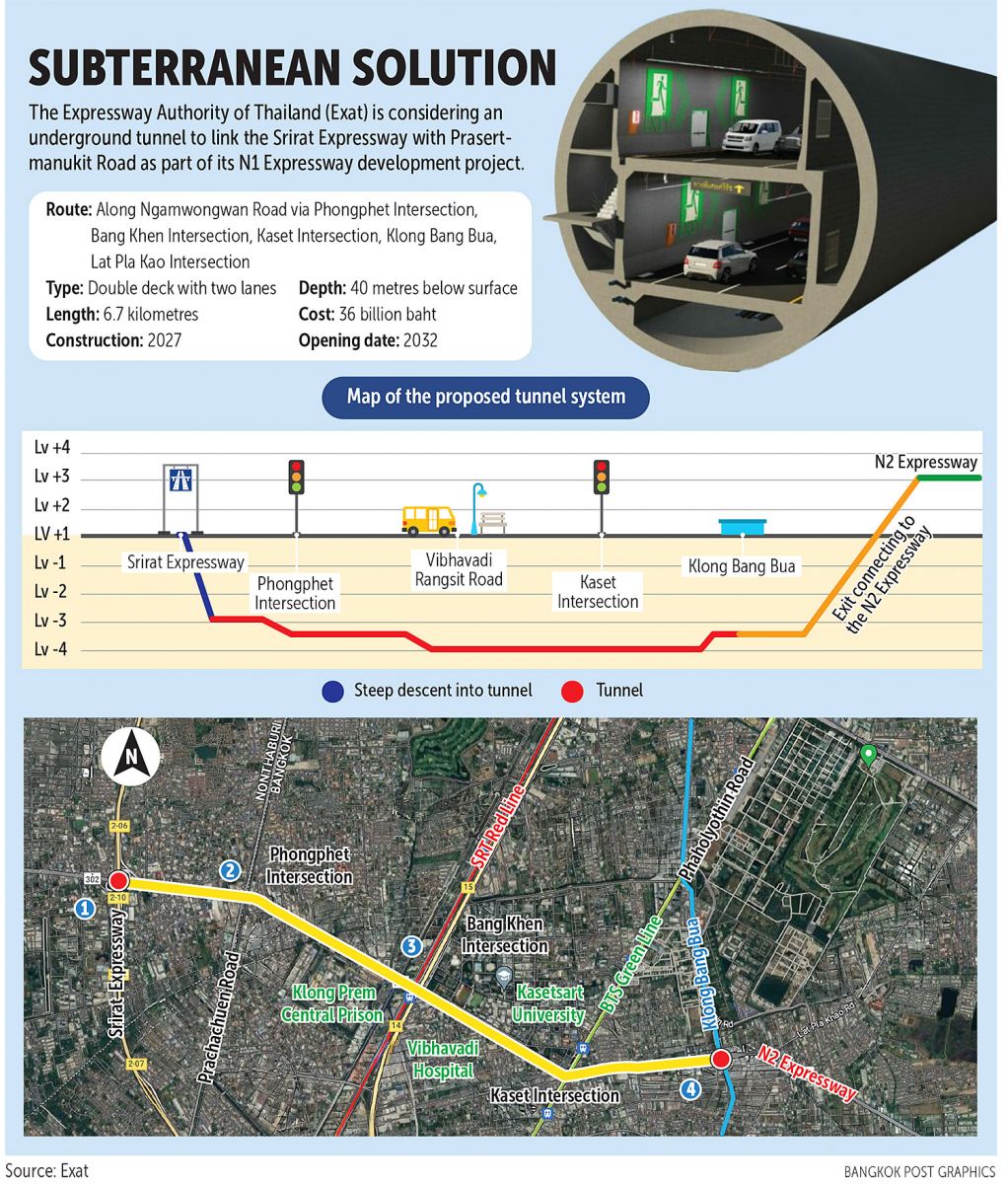
Proposal comes with a B36bn price tag
The Expressway Authority of Thailand (Exat) has proposed an underground route to replace a controversial section of the N1 Expressway development following a 17-month initial feasibility study.
Speaking at the second hearing on the project, Exat governor Surachet Laophulsuk said on Monday the agency had considered several aspects, including engineering, investment costs and environmental impact and found the underpass the most feasible.
The 6.7km underpass, which will be the country's first expressway tunnel, will run along Ngarmwongwan Road via Phongphet Intersection, Bang Khen Intersection, and Kaset Intersection to Prasertmanukit Road before connecting with the N2 Expressway.
He said the tunnel, one of three options under study, has a total score of 82.5 with an estimated investment cost of 36 billion baht and an economic internal return rate of 17%.
Exat is in good financial health and is considering investing in the project itself, he said, adding the agency may consider issuing bonds to raise money to fund the construction.
Mr Surachet said the environmental impact assessment will be wrapped up in May next year for submission to the cabinet for approval. A bidding is tentatively scheduled for 2026, with construction to follow the next year.
Construction is likely to take about five years, and in the first year of opening, traffic volume is estimated at 70,000 vehicles per day, half of the route's total capacity.
He expressed confidence that the proposed underpass would be approved by those who had environmental concerns about the previous design.
Mr Surachet said the northern part of the three-phase expressway development is divided into two stages.
The first stage, N2, runs from Prasertmanukit Road to the eastern Outer Ring Road, with a length of 11.3 km and an investment cost of 16.9 billion baht. The project is ready and will be submitted to the new government for approval soon.
For the second stage, N1, Exat has conducted the feasibility study of alternative routes to replace the controversial section and come up with the underpass following discussions with Kasetsart University and communities along the planned route.
